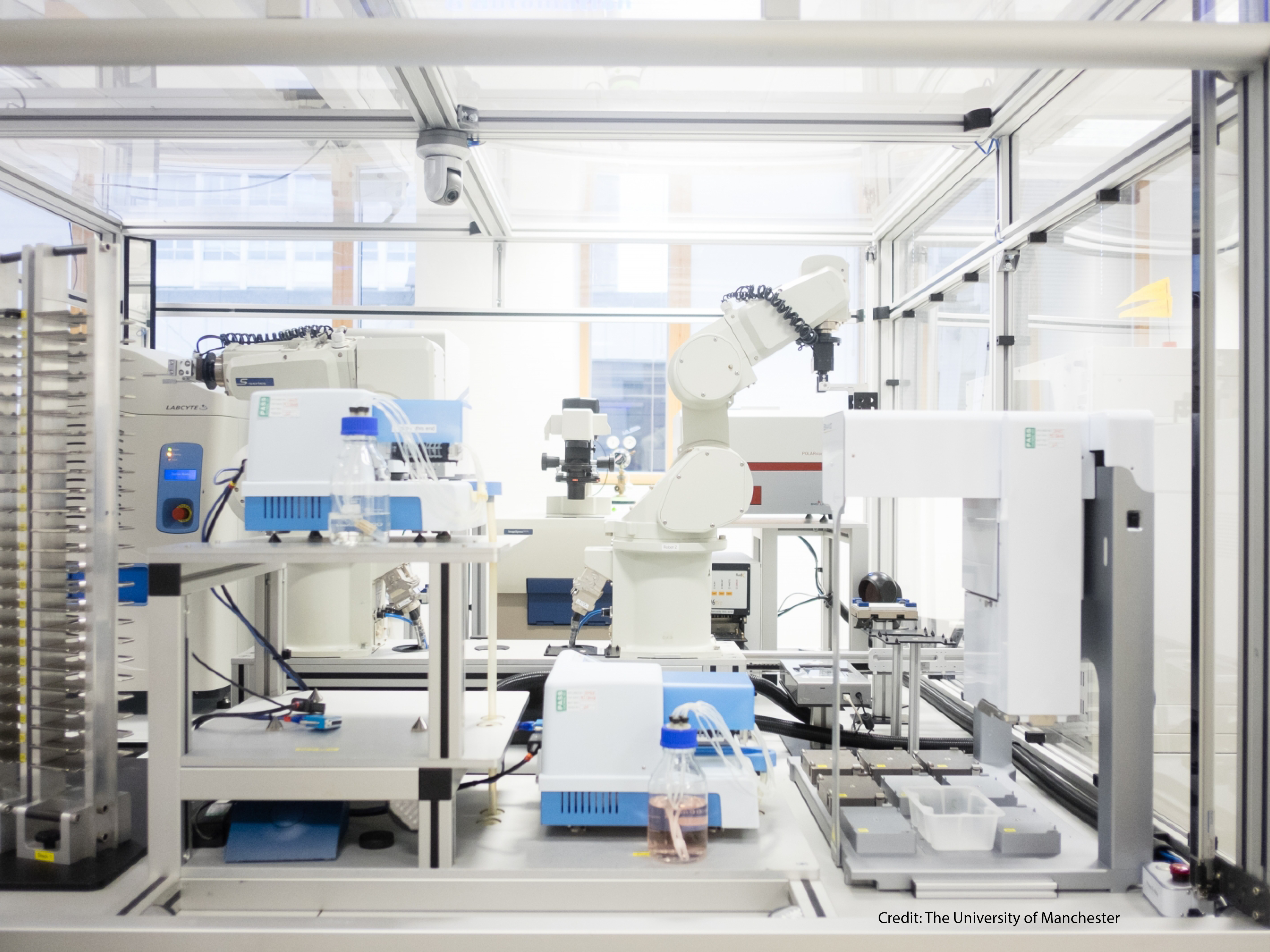Building the brain of a robot scientist
I gave this talk as a finalist in UCLA’s Grad Slam competition, 25 April 2017. Below is a transcript of my talk.
Some robots build cars. And some robots drive cars. But other robots—like this one—do something far more interesting: they do science.

Science involves more than just physical work like mixing chemicals. It involves intellectual work like weighing evidence and forming hypotheses. So beyond just performing experiments, a robot scientist needs to plan experiments. How can we teach robots to hypothesize—not just automatically, but intelligently? How can robots work with humans to make discoveries?
To do this, robot scientists will need more than just coordinated limbs with fine motor skills. They’ll need something like a brain that can reason. Specifically, they’ll need to reason about causality, about cause-and-effect relationships. Do cigarettes cause lung cancer? Can a drug cure Alzheimer’s? Cause-and-effect questions like these motivate what scientists do.
What’s exciting is that we’re starting to understand causality using math, in ways that we can program into robots. This is a huge accomplishment. Professor Gary King at Harvard said recently that we’ve learned more about causality in just the last few decades than in all prior recorded history.
We model causality with a causal graph—like this one. In this simple diagram, radiation causes a genetic mutation, and the genetic mutation causes cancer. One thing this causal graph tells us is that if we can somehow control whether the genetic mutation occurs, we can block radiation from causing cancer.
The problem is that there are far too many causal graphs for scientists to consider every one. Without computers to help them, they probably won’t find every valid explanation, and their science will suffer.
For just three variables, there are 64 possible causal graphs, 64 possible causal explanations. For systems with even more variables, there are more causal graphs to choose from than there are atoms in the universe. So searching for that one true causal graph, that one true causal explanation, is like searching for a needle in a cosmically large haystack.
But now that we can express causality with math, scientists can train computers to search through that haystack for them—much faster than the scientists ever could. It’s similar to how we use a calculator to add large numbers, since most of us would struggle to add those numbers in our heads.
I’m developing software that could someday be part of a robot scientist’s brain. To plan experiments automatically, we feed the software scientific evidence. Next, the software finds every causal explanation—every causal graph—that is consistent with the evidence; it discards the graphs that are inconsistent. The software then calculates which next experiment would be most informative, which next experiment would make that haystack as small as possible. It’s like a calculator for causality.
We don’t ask bankers to manage our money without calculators. We shouldn’t ask scientists to plan their experiments without computers. Calculators won’t take over the banks, and robots won’t take over science. We need to embrace them.
⁂
Subscribe to my mailing list if you’d like to read more.